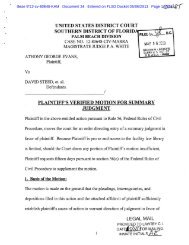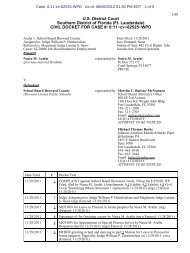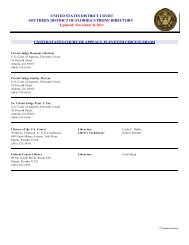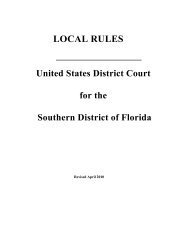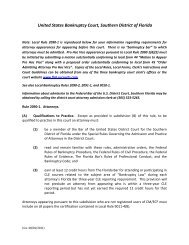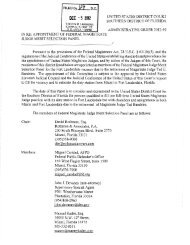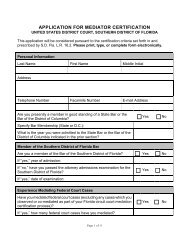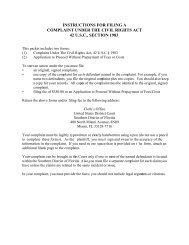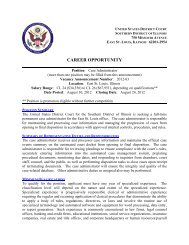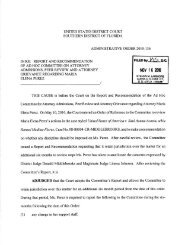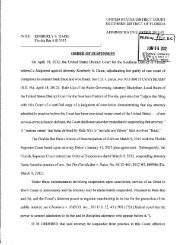JAN j 6 2010 - United States District Court
JAN j 6 2010 - United States District Court
JAN j 6 2010 - United States District Court
Create successful ePaper yourself
Turn your PDF publications into a flip-book with our unique Google optimized e-Paper software.
judgments, the rule recognizes two distinct groups of in rem claimants.<br />
The first category of claimants include those who by ownership or otherwise,<br />
would, but for the arrest of the property, be entitled to its possession.<br />
Pursuant to Supplemental Rule C(6), these claimants must file a claim setting<br />
forth their interest in the property, demand their right to receive possession,<br />
and to appear and defend the action. In the case of such claimants, the<br />
operation of standard default procedures foreclose their rights to contest<br />
positions of the party in whose favor the default is rendered, and the entry of<br />
default judgment is both fair and appropriate.<br />
The second category of claimants embodies a potentially numerous and varying<br />
class of claimants. The claims of these other claimants do not give rise to a<br />
right of possession of the vessel from the marshal or other appropriate<br />
custodian, but rather invoke the power of the <strong>Court</strong> in admiralty to foreclose<br />
against the property by the ultimate rendering of a judgment in rem against<br />
property entitlements. Such judgments would be predicated upon non-possessory<br />
liens.<br />
The time in which the second category of claimants may intervene is governed by<br />
the provisions of Local Admiralty Rule E. Such lien claimants are not<br />
obligated, and indeed are probably not entitled to file a claim of possession<br />
to the vessel, or to answer and defend in the name of the vessel. As to them,<br />
in accordance with Federal Rule of Civil Procedure 8, the essential averments<br />
of all the complaints are taken as automatically denied.<br />
No default judgments entered pursuant to this rule will operate to adjudicate<br />
priorities among competing non-possessory lien claimants.<br />
In attempting to reconcile the traditional notions of default and default<br />
judgments with the concept of in rem proceedings, the final language has been<br />
formulated to maintain the efficacy of the default procedure without resulting<br />
in premature adjudication effecting priorities and distributions. The default<br />
procedure establishes in favor of the holder of such a default judgment, a lien<br />
position against the proceeds of the property, resulting from any sale or<br />
disposition, or, if currency is involved, the ultimate adjudication, inferior<br />
to all other competing priorities, except the otherwise escheating right of the<br />
property owner to the remnants and surpluses after all full-claims<br />
satisfactions. At the same time, the right of a person obtaining a default<br />
judgment to contend and compete with other claimants for priority distribution<br />
remains unaffected.<br />
(2000) Local Admiralty Rule C(9) is amended to give the party seeking entry of<br />
a default judgment up to thirty days, rather than five days, to file a motion<br />
and supporting legal memorandum.<br />
(2001) Corrections to rule number references.<br />
(<strong>2010</strong>) Amended to conform tabulation to the style used in the federal rules<br />
of procedure.<br />
Rule B4. Possessory, Petitory and Partition Actions<br />
414-(a) Establishing Dates for the Return of Process. In possessory actions<br />
118



